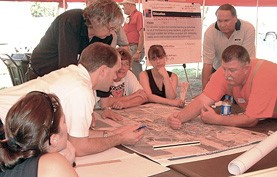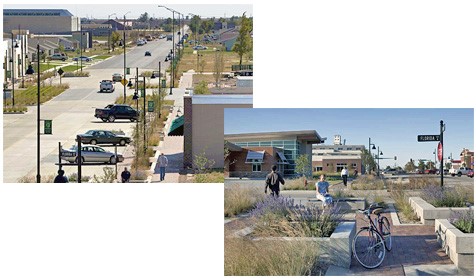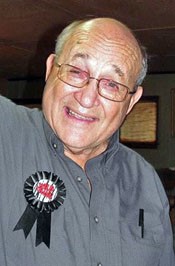When it’s hot, we can help “shave the peak”
By Gina Snyder
“Shave the Peak,” said the email message. My local light department was asking me to join in its efforts to help reduce the summer’s peak electrical demand and with that, also reduce the cost of electricity. The highest electric use runs from June 1 through Aug. 31. There are a few really hot days when everyone is running air conditioning on top of other appliances, which causes a spike in electricity use – the peak.
Air conditioners in particular put a high demand on electricity. The email explained that about 25  percent of our electric bill is determined by how well electricity is conserved during that peak time. In my area the peak occurs on a hot weekday afternoon sometime in June through August, usually between 2 and 5 pm.
percent of our electric bill is determined by how well electricity is conserved during that peak time. In my area the peak occurs on a hot weekday afternoon sometime in June through August, usually between 2 and 5 pm.
The defining hour represents the highest point of customer consumption of electricity for all of New England. The prediction of the peak is done by the Independent System Operator – New England. One of the commissioners of our local light department has said nearly $1.1 million could be saved simply by reducing “peak afternoon electricity use.” He noted that this would also cut emissions.
Why would reducing afternoon electricity use lower costs and cut emissions? Mainly because of how electricity is generated and used. Picture electricity flowing through the wires like your drinking water flows through the pipes. When you turn on the faucet, water pours out. When you turn on the switch, it’s as though electricity ‘pours’ into the appliance to make it run.
Drinking water is easy to store, so that if the water treatment plant can’t keep up with demand, there’s a storage tank that has gallons and gallons of water stored to provide water when it’s needed. But we don’t have storage like that for electricity. Instead, as demand goes up, more power plants have to come online.
This means that some power plants run all the time and some power plants only run on the hottest days of the year. The latter plants sit there year round, costing money and maintenance, only to run a few hours or a few days a year. And everyone has to pay to have those “peaking plants” available.
The result is we pay all year for the electricity to be available to us during that very brief peak time. Peaking plants typically are the least efficient and most expensive to run and often come with higher emissions per unit of electricity generated than other plants. To encourage people to avoid using electricity during those afternoons, electric companies have developed rates called “Time of Use” or TOU. In my town, you can sign up for a time of use rate and, by avoiding electric usage during those peak times, save money.
You’d also be helping the environment because peaking plants mostly run on oil or natural gas, with attendant emissions. So by cutting down on power needs during peak times, you can also help lower emissions from those extra plants going online. So, start watching your own “time of use” and see if you can help lower emissions and the cost of electricity in Massachusetts.
You can help by not using appliances like stoves/ovens or washers and dryers during the hottest time of the day, shutting off pool pumps for a few hours, turning off or raising the setting on your air conditioning thermostat a few degrees or cooking dinner on the grill.
-30-
About the author: Gina Snyder works in the Office of Environmental Stewardship, Compliance Assistance at EPA New England and serves on her town’s climate committee. She llives in Reading, Mass.




















